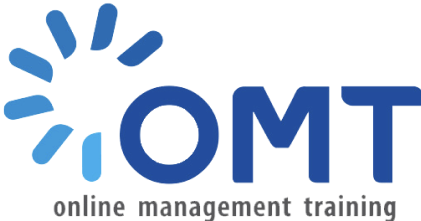



7 Key eLearning Trends For 2016
30/06/2020

Share the post
If there’s something that is quite certain about the future, it’s the rise of eLearning. Nowadays we see new online learning options popping out every month and traditional classroom environments are more eager than ever to incorporate new technologies into their curricula. The category of eLearning is itself susceptible to various trends and fashions, so it’s only a question of time before we see completely new methodologies and strategies emerge from this powerful field. What’s in store for the innovative eLearning methods in 2016? Here are key trends to watch for this year.

- Automation
Numerous education experts predict that 2016 will be the year when automation will finally become a crucial aspect of both content creation and processing. It’s most likely that content providers will use an increasing number of automated solutions to create new courses and learning materials, saving the time and money involved in conventional processes. Coursework elements, such as tests, quizzes and exercises will all be generated by tools able to efficiently scan the course content and recognize its most important aspects that should be tested. Courses will undergo the process of optimization to match the preferences and requirements of every single user. Their skills and knowledge level will be assessed by automated tools that will in turn offer algorithmic solutions used in creating course content. - Augmented Learning
This is another area under intense development – it’s very likely that by 2016, augmented reality devices ranging from Apple Watch to Google Glass will become a common element of our everyday realities. When it comes to learning, augmented learning offers a great value in adapting environments to the learner. This is a solution for which the market is predicted to grow very fast, reaching a smashing number of 200 million users in just 3 years! 2015 will definitely pave the way to an increased use of augmented reality in eLearning, culminating in its widespread use in 2016. In eLearning, learners will be able to access augmented environments by means of QR codes or mobile technologies like Apple Watch or Google Glass. This kind of learning will primarily engage learners with action-based functionalities in real life conducted by means of GPS tracking, as well as with courses developed by Oculus Rift. - Big Data
Big data is big everywhere – including eLearning. It’s clear that every year we’ll have more and more data to process, and learning centers will use tools made especially for big data analytics to make sense of the user-generated information. Only those tools will be able to analyze a heap of data produced during one semester and deliver meaningful and valuable conclusions abut user performance or course content optimization. Big data analytics will help learning providers to better understand the learning process itself – by tracking learner and group patters and performing a thorough feedback analysis, they’ll be able to offer full course personalization and compile a comprehensive ROI report for learning. The promises held by big data analytics for eLearning are very impressive and will become more important than ever in 2016. - Going for cloud
The use of cloud is on the rise – in every sector, including eLearning. Enterprises are willing to embrace the functionality, comfort and security of the cloud – even though many people still think that it’s not a good idea to keep data on public servers, those attitudes are slowly weaning. The eLearning market trends and forecast report predicts the use of cloud-based authoring tools and learning platforms to grow by 9% in the US – each year counting from 2013. This essentially means that by 2016, eLearning users will benefit from established cloud technologies assisting their learning process in many different ways. - Gamification
This is a key trend for 2016. Gamification is today a major trend that most of us are still waiting to explode – especially on the e-learning scene. Experts agree that applying game dynamics onto non-gaming contexts brings really great results – most importantly, in motivating people to achieve their goals. This feature can be easily applied to learning and eLearning environments. Gamification offers a potential strategy for improving user engagement with learning materials – some experts claim that the technique can boost learner’s motivation to a smashing 90% recall rate. It’s quite simple. Once learners assume an active role in knowledge reception, they will automatically improve their chances at remembering it. - mLearning
This trend clearly follows the general rise of mobile technologies all over the world. Together with the increased use of mobile devices will emerge an interest in mLearning. Some industry experts expect mobile learning to dominate the e-learning market some day – even if this prediction sounds a little extreme, you should consider the fact that mobile is actually expected to dominate many other areas too. In short, maybe there’s a ring of truth to it after all. What exactly is mLearning and what will be its consequences? Using mLearning technologies, learners will have all the wealth of knowledge accessible at all times and places. They will benefit from contextual learning achieved through micro-location technologies (like QR codes, GPS and other) that will return learning into its context – also allowing for a much better use of augmented reality. - Personalization
All those trends point to this key insight – the growth of personalization on all levels of eLearning. Once we’ll be able to analyze big chunks of data, we’ll see e-learning becoming more personalized than ever and addressing the needs, preferences and requirements of individuals rather than groups. All aspects of learning ranging from pedagogy and learning environments to learning tools and course curricula will be tailored to motivate, engage and inspire learners to achieve better results in a shorter time frame. It’s clear that 2016 will be a revolutionary year for eLearning. It will be more about developing a personalized approach to learning – by adjusting the pace of instruction, leveraging student interests, letting learners to choose their own leaning path and adjusting content presentation by choosing text, images or videos, instructors will be able to deliver their coursework in more efficient ways. eLearning will become a great source of revenue as well. Experts predict that revenues from eLearning solutions in the US are expected to reach a smashing $27.1 billion by 2016.
It’s very likely that in 2016, eLearning will completely change our approach to instruction, knowledge management and learning methodologies.
Source: Elearning Industry website








